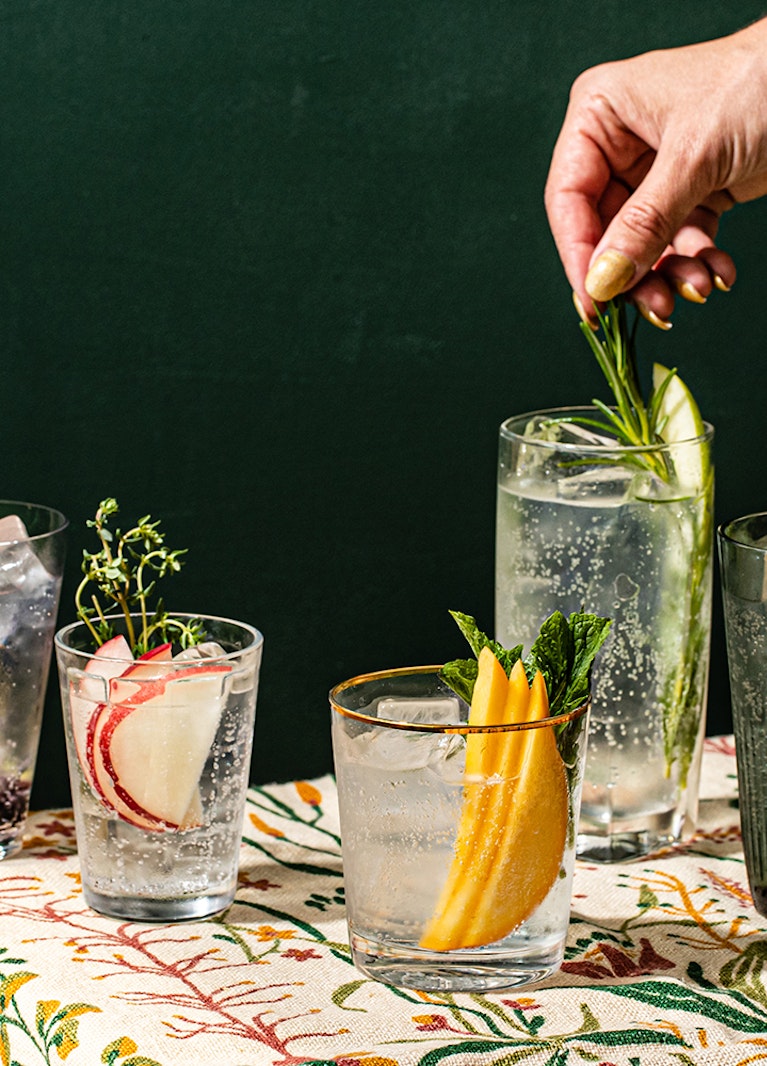How To Garnish From Your Garden
Lots of people perfected new skills in lockdown. I didn't, but I stayed sane and that is an achievement in itself. If you did acquire new skills, well done you! Several of my friends started veggie patches and are starting to see the fruits of their labour (pun intended).
If you didn't, it's never too late to start—if only for the purpose of growing garnishes for your G&Ts. If you're lucky enough to have space for a fruit tree, why not plant a citrus? You could give yourself lemons rather than waiting for life to give them to you. If you have a small patio or balcony, make do with lots of pots. It is so incredibly satisfying to pick your own rosemary or thyme to enliven your spirits.
But don’t just take my word for it. I spoke to Hayley Mason, co-founder of Settler Hives, and Archie Rose’s own resident green thumb Simon Audus to get the download on all things gardening and garnishing.
Why start?
“The satisfaction,” says Hayley. “It’s a beautiful, natural feeling.” Simon agrees. “I find it relaxing," he says, adding "The feeling you get when you are in a well-designed garden is pretty special.” It seems there’s a certain je ne sais quoi to be gained from a garden to call your own.
Tips for first time gardeners
Simon and Hayley are on the same page here, too. “Give it a go,” says Simon. “And don’t forget to water your plants.” Hayley also advises composting to help maintain a healthy garden. “Firstly, don’t be afraid to have a crack. And secondly, get composting by putting your food scraps back into the ground,” she says, suggesting a compost mix made from 50 per cent brown leafage or cardboard and newspaper to 50 percent food scraps. Hayley’s business Settler Hives is founded on sustainable principles, so it’s no surprise that she encourages all of us to aim for the same. “Try to always find a natural solution before reaching for synthetic fertilisers or weed killers because every little choice counts.”
No space? No worries!
If you don’t have a sprawling backyard, there’s a solution to that. “Show us your pots!” says Hayley. “We know so many people with no dirt and thousands of flowers growing out of a pot passion.” Simon has made the most of his inner-city terrace by getting creative with his space. “I’ve utilised the balcony at the front of my house to create a vertical garden that cascades over two levels,” he explains, adding “In my backyard I have several planter boxes where I grow a variety of Australian natives and Mediterranean herbs and flowers such as Kangaroo Paw, Lavender and Camellias. I also grow lots of herbs and fruits including rosemary, passionfruit and oranges.”
So, what’s the deal with garnishing?
We’ll let Simon take this one—he is our Bar Manager, after all. “Garnishes are important because they allow you to add flavour or aroma to a drink. Taste is entirely subjective and by adding a slice of lemon or even a mint sprig you enable change in your drink,” he explains. While important, Simon maintains that garnishing isn’t something to get too stressed about. “When entertaining at home the difference between a lemon and a lime is negligible. The key to garnishing is minimising stress whilst maximising flavour.”
Garnishes to live by
When it comes to garnishing Hayley is all for herbs “I love Rosemary with ice, tonic water and a good gin!” Simon, on the other hand, calls out citrus. “The humble lemon is probably the most versatile ingredient,” he says. “Great in a gin & tonic as a wedge. Perfect in jug cocktails cut into wheels, and the skin is great as a twist in martinis.” With a garden full of garnishes, Simon naturally has a few other combinations up his sleeve. “I generally pair my passionfruit with Gin cocktails, the oranges go well with our Rye Whisky and the lemon myrtle I pop in my Vodka sodas.”
Consider Flowers
Fruit and herbs aren’t your only option when it comes to garnishing your drinks. “Edible flowers are our number one most popular variety of seeds,” says Hayley. “We just adore them, especially when frozen in water—literally like icing on a cake.”

Harry's garnish guide
Here are five of my own suggestions for your next gin & tonic (pictured above, left to right). But you don't have to stick to these combos—the great thing about rummaging around in the garden for a fancy hat for your drink is mixing and matching. Play around!
- Original Vodka, with soda, blackberry and parsley
- Signature Dry Gin, with tonic, white peach and thyme
- Sydney Opera House Inside Gin, with tonic, mango and mint
- Sydney Opera House Outside Gin, with tonic, cucumber and rosemary
- Distiller's Strength Gin, with tonic, mandarin and sage